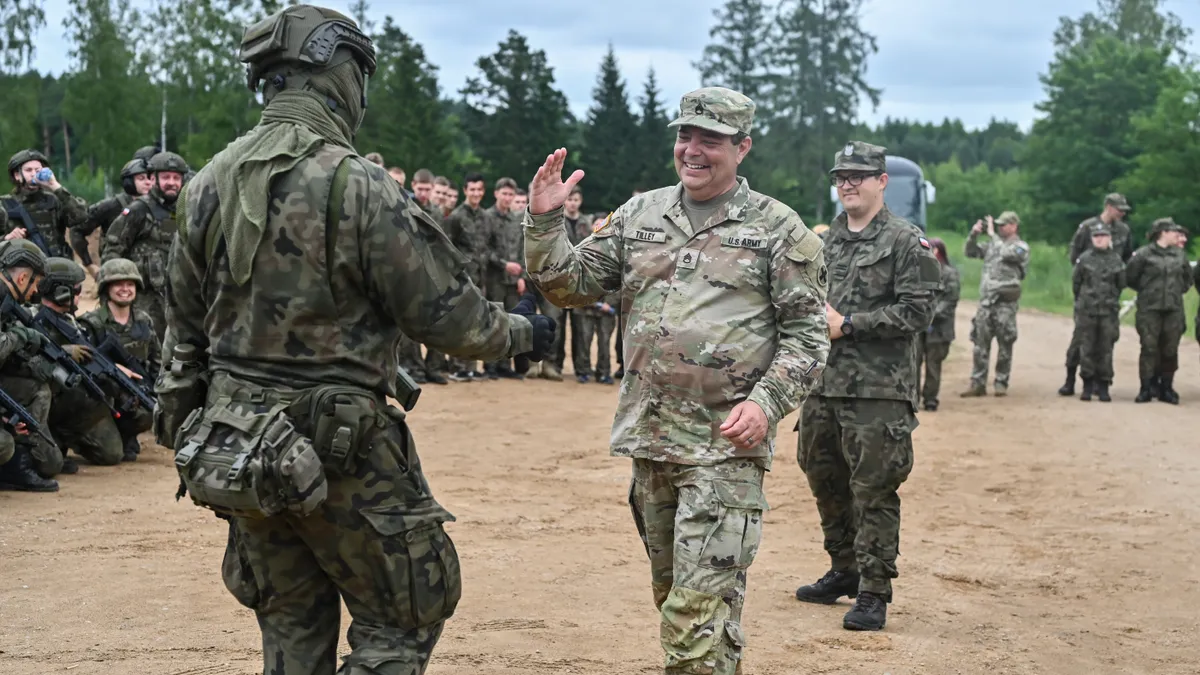Brendan Kelly is senior administrator, after-action review, at the University of North Texas Health Science Center at Fort Worth. He served in the U.S. Army from 1989 to 2010.

During my military career, we used the after-action review process, or AAR, for everything. Informal AARs were used to pause and learn or implement corrective action on the spot. Then a formal AAR took place after an event, training session or project implementation.
As an AAR senior administrator in higher education, I’ve reached out to and spoken with other institutions, discovering the majority are only using the AAR as part of their emergency management process. While this is great, they are missing out on the benefits of AARs. When the AAR is used to its full potential, communication and engagement with team members is more productive.
About the AAR process
In the 1970s, the U.S. Army developed the after-action review to address how it trained and prepared for future events. The AAR asks participants to answer what I call the “Four Big Questions.” Facilitators will guide participants through the process, helping them to discover for themselves what was supposed to happen, what actually happened, what went right and wrong, and what to do differently next time.
The discussion leads to deeper understanding of why — why it was planned this way, why a team performed as they did, why results didn’t achieve the modeling and research expectations, and what needs to be changed or implemented. These questions also help to answer what went right and what is working.
As an after-action review senior administrator with the University of North Texas Health Science Center in Fort Worth, I’m thankful this institution's leadership had a vision that included a focus on process improvement. To initiate a quality process improvement plan we must know what needs improvement, what’s not working and learn why. The after-action review is that bridge.
I learned departments tend to work in silos, even though the same kind of project has been done by other departments, and they have a good idea of what to do and what not to do. Information goes unshared due to the lack of communication between silos.
When I accepted this position, I was excited to use a tried-and-true learning method, assist teams as they worked to discover lessons learned and be the bridge from department to department. I had to be the champion for this new information. I chose to use a grassroots communication plan, telling the AAR story to every department, person and group that would listen, while developing a guidebook and other resources.
I knew some people would be eager and some would not be, due to fear of the unknown. The fear comes in many forms: fear of starting a new job, fear of moving away from home. The sum of all this is fear of change.
Change can be exhausting, especially when it is unclear why something must change. I was introducing and incorporating something new.
“I am not here to change what you do. I am here to assist and, if needed, guide you through the discovery process,” is something I have said quite a few times. It is important to be transparent, share your “why,” your goals, and how you will proceed and incorporate the after-action review process.
When change happens
With the discovery of lessons learned, change may potentially take place. During the AAR, participants share their perspective when each of the “Four Big Questions” is asked. By sharing individual perspectives of the event, a consensus may arise for needed change. When the need for change is discovered in this way, buy-in is very high.
Communication is a vital part of the AAR process and a vital part of any organization’s success. To have quality communication, teams have to develop a level of trust. Being accountable for one’s actions is a good first step. Another is to simply listen.
In a March 2022 survey of employees in higher education conducted by Grant Thornton, 59% of faculty and staff felt that their voices were not being heard. Seeing this statistic made me do a double take.
Tailoring the AAR process and making it relatable, understandable and easily incorporated into a department’s agenda is important. I had to, and wanted to, learn about our departments and teams. Taking time to learn is not only important, it is the right thing to do. How can I, or anyone else, give quality feedback without understanding the full picture?
When we effectively communicate at all levels, asking clarifying questions and confirming what’s understood, we can achieve well beyond expectations. Leadership must provide direction, purpose and motivation. Leadership should share the "why." If the "why" is understood, the team is more engaged.
I had the privilege of facilitating an AAR for our new biomedical undergraduate degree program not too long ago. From the outside looking in, one might simply think it's easy to start another degree program. After all, you’re a university, it’s what you do.
Well, not so much. This was new territory for our campus, and as we discovered during the formal AAR, there were a lot of things that had to happen within a short period of time.
Everyone engaged in this AAR was respectful and open to learning. There was a desire to understand how actions affected actions, why one’s timeline was influenced by another’s timeline, and to clarify each step in the process. As a facilitator, I asked open-ended questions and received thought-provoking feedback, and people were engaged. As I concluded the AAR, there was genuine agreement that AARs have to be a part of future processes.
Many colleagues have since expressed their appreciation for the AAR process. The universe has justified my role and the activities I have accomplished thus far. People were realizing this isn’t just a meeting, not something to check the box on. The AAR is a beneficial process and can be easily incorporated into all planning and activities.













